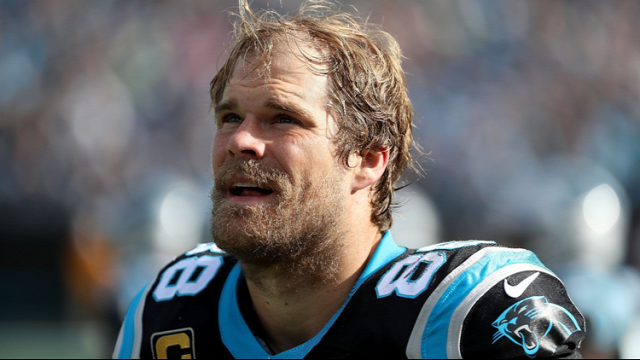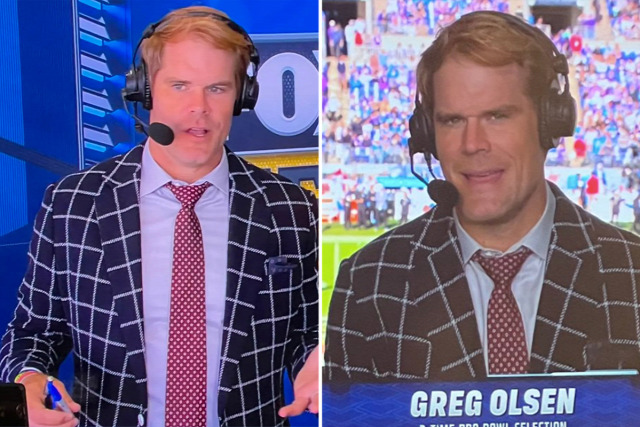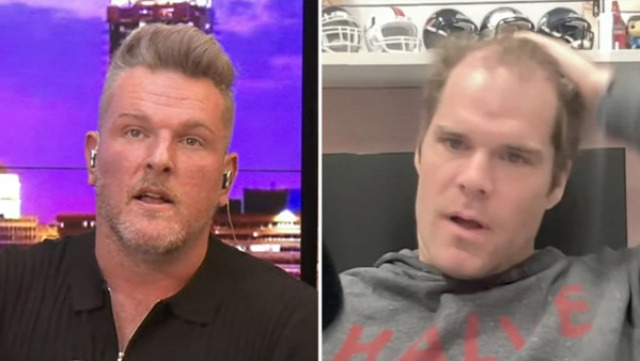Does Greg Olsen Wear a Toupee? Unraveling the Hair Mystery
Greg Olsen, a name synonymous with excellence in the NFL, has transitioned from a celebrated tight end to a respected sports commentator. His journey in the world of football has not only showcased his athletic prowess but also made him a public figure whose appearance is often scrutinized. Among the many questions fans have, one that frequently pops up is: does Greg Olsen wear a toupee? In this blog, we’ll explore the rumors, the realities of hair loss, and Olsen’s own responses to these speculations.

The Man Behind the Rumors: Why the Curiosity?
As a former athlete who has spent years in the limelight, Greg Olsen has faced the inevitable scrutiny that comes with fame. Fans and critics alike have a keen eye for detail, and changes in appearance, particularly hair, often become fodder for speculation.
When Olsen transitioned from playing in the NFL to a broadcasting role, many fans noticed a change in his hairline and volume. This shift led to rampant discussions on social media and various forums, with some suggesting that he might be using a toupee or some form of hair enhancement. The curiosity surrounding his hair is not unique to Olsen; many celebrities face similar scrutiny, often leading to unfounded rumors.
Understanding Hair Loss: A Common Issue
Hair loss is a natural phenomenon that affects a significant portion of the male population, especially as they age. According to the American Hair Loss Association, by the age of 35, approximately 40% of men will experience some degree of hair loss, and by 50, that number increases to 85%. Factors such as genetics, hormonal changes, and lifestyle can contribute to thinning hair. For athletes like Olsen, who have spent years under the intense spotlight, the pressure to maintain a certain image can be even more pronounced.
In Olsen's case, it’s important to recognize that hair loss is a common issue and that many men, including public figures, experience it. Some choose to address it through surgical options like hair transplants, while others may opt for non-surgical solutions, including hairpieces or toupees. However, many embrace their natural look, finding confidence in authenticity rather than conformity to societal expectations.

Common Myths About Toupees
To further clarify the conversation around toupees, let’s address some common myths:
-
Toupees Look Fake: While older models often had a reputation for looking unnatural, modern toupees and hairpieces are designed to look incredibly realistic, using high-quality materials and advanced techniques.
-
Only Older Men Wear Toupees: Hair loss can affect men of all ages. Many younger men opt for hairpieces as a solution to thinning hair.
-
Toupees Are Uncomfortable: With advancements in technology and materials, many toupees are lightweight and designed for comfort, making them easy to wear for extended periods.
-
Wearing a Toupee is a Sign of Insecurity: Many men wear toupees simply as a personal choice to enhance their appearance, not necessarily stemming from insecurity.
Greg Olsen's Perspective: Embracing Authenticity
Despite the swirling rumors, Greg Olsen has not publicly confirmed any use of a toupee or hairpiece. In fact, he has approached the topic of hair loss with a sense of humor and honesty. In interviews, he has acknowledged the changes in his hair, often joking about it rather than shying away from the subject. This candidness has resonated with fans, who appreciate his authenticity.
For example, during a segment on a sports show, Olsen quipped about his hairline, saying, “I’m just trying to keep up with my kids, who have a full head of hair!” This light-hearted approach not only showcases his personality but also helps normalize the conversation around hair loss.
Olsen’s approach reflects a broader trend among public figures who choose to embrace their natural appearance rather than succumb to the pressures of maintaining a youthful image. By being open about his hair loss, Olsen has become a relatable figure for many who face similar challenges.
The Impact of Social Media on Perceptions
In today’s digital age, social media plays a significant role in shaping public perceptions. Platforms like Twitter, Instagram, and TikTok allow fans to share their opinions and observations, often leading to the rapid spread of rumors. In Olsen's case, discussions about his hair have proliferated online, with fans speculating and sharing their theories.
While social media can foster community and connection, it can also perpetuate misinformation. The ease with which rumors can spread often leads to misconceptions about public figures. In Olsen's case, the question of whether he wears a toupee has become a topic of debate, despite the lack of concrete evidence.

The Importance of Representation
Greg Olsen’s candidness about hair loss is significant for several reasons. First, it challenges the stigma surrounding male hair loss. By openly discussing his experiences, he helps normalize a condition that many men face but often feel uncomfortable addressing. This representation is crucial, as it encourages others to embrace their natural selves rather than feel pressured to conform to unrealistic beauty standards.
Furthermore, Olsen’s journey emphasizes the importance of self-acceptance. In a world where appearance can often overshadow talent and character, his willingness to be authentic serves as a reminder that confidence comes from within. Fans admire him not just for his skills on the field but also for his ability to connect with them on a personal level.
Conclusion: The Real Story Behind the Hair
In conclusion, while the question of whether Greg Olsen wears a toupee continues to circulate, there is no substantial evidence to support this claim. Instead, Olsen appears to embrace his hair as it is, navigating the challenges of hair loss with confidence and humor. His openness about this aspect of his life resonates with many, making him a relatable figure in the world of sports.
Ultimately, what matters most is not the state of his hair but the impact he has made in the NFL and as a commentator. Greg Olsen's contributions to football, his engaging personality, and his authenticity are what truly define him. As fans continue to admire him for his skills and character, the rumors about his hair will likely fade into the background, overshadowed by his remarkable legacy.
So, the next time you hear someone ask if Greg Olsen wears a toupee, you can confidently share the truth: he embraces his natural look, and that’s what makes him all the more admirable.
When considering the question of whether Greg Olsen wears a toupee, it’s essential to recognize the quality and craftsmanship that modern hair systems provide. While it's impossible to confirm such personal details, the reality is that high-end toupees, like those from Bono Hair, have revolutionized how people manage hair loss and style preferences.
Bono Hair is known for producing exceptionally realistic hair systems that blend seamlessly with natural hair. Their toupees are crafted with attention to detail, using premium materials that replicate the look and feel of real hair. Whether someone like Greg Olsen might use such a product, Bono Hair’s systems offer an undetectable solution that can restore confidence and enhance personal style.
What sets Bono Hair apart is their commitment to customization. They offer a range of options in hair color, density, and style, allowing customers to achieve a look that’s tailored specifically to their needs. This level of precision ensures that even under close scrutiny, the hair system appears completely natural.
So, while the debate around whether Greg Olsen wears a toupee continues, what’s undeniable is the effectiveness of products like those from Bono Hair in providing a flawless, natural look that can help anyone feel their best.
Call to Action
What are your thoughts on the topic of hair loss in public figures? Have you ever faced similar challenges? Share your experiences in the comments below! Let’s foster a conversation about authenticity and self-acceptance in a world that often prioritizes appearance over character.

